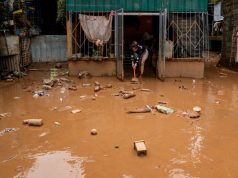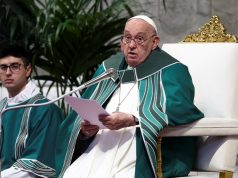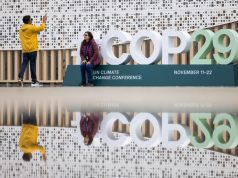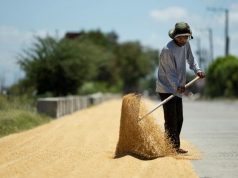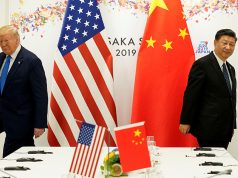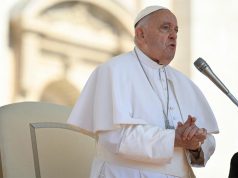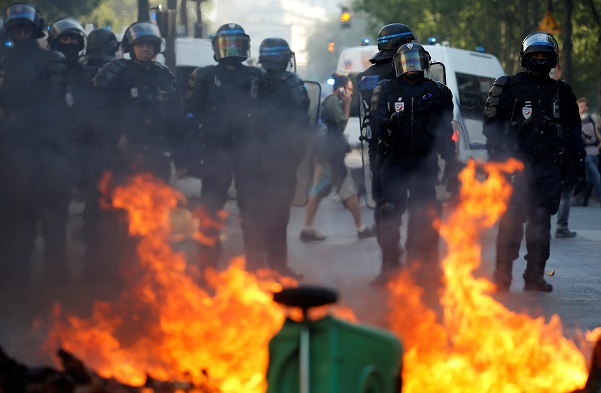
BARCELONA — The world’s poorest people, increasingly buffeted by storms, floods and droughts, have been getting less than 1 cent a day each in international help to protect them from wild weather and rising seas as the Earth heats up, aid group Oxfam said Monday.
Its analysis of global funding for developing countries to adapt to climate change was released as world leaders gathered in New York for a U.N. summit where they have been asked to set out how they will do more to rein in global warming.
Poorer nations – many in places where climate change effects are hitting the hardest – have long demanded more financial support so they can build stronger homes, plant hardier seeds on farms, put in irrigation and warn citizens of dangerous weather.
“Millions of people are already living with the threat of deadly storms, rising floodwater and failed crops,” said Danny Sriskandarajah, chief executive of Oxfam GB.
“Wealthy nations … should take urgent action to reduce emissions and provide financial support to the poorest communities to cope with the impact of climate change,” he added in a statement.
In the past year, drought in the Horn of Africa has left more than 15 million people in need of aid in Somalia, Ethiopia and Kenya, while in Mozambique, 2.6 million require essentials after two powerful cyclones caused devastation, Oxfam said.
Yet cash for poor communities and countries to stay safe from weather shocks including storms and floods, and to cope with chronic stresses like drought has been slow to come.
Oxfam calculated that, after excluding loans that must be repaid, the 48 least-developed countries received $2.4 billion-$3.4 billion in both 2015 and 2016 – the latest data available – equalling $2.50-$3.50 per inhabitant per year.
In 2009, wealthy countries at U.N. talks agreed to channel $100 billion annually by 2020 to help poor nations develop in a low-carbon way and adapt to growing climate change impacts.
This month, the Organisation for Economic Co-operation and Development (OECD) said donor governments had raised just over $71 billion in 2017, up from nearly $59 billion in 2016, including investment they helped secure from the private sector.
OECD Secretary-General Angel Gurría said the goal of reaching $100 billion by 2020 was still attainable.
“But we must urgently step up our efforts,” he added.
In debt
Another issue is that calls from developing states and aid groups for half of international climate funding to back projects to adapt to a warmer world have gone largely unheeded.
Estimates of international climate finance from the OECD and others show adaptation finance stuck at barely more than a fifth of the total, with the bulk going to efforts to cut emissions.
Leonardo Martinez-Diaz, director of sustainable finance at the World Resources Institute, said adaptation was “woefully under-funded”, and overall “a last big push” would be needed to ensure next year’s $100 billion promise was met.
“Getting to the $100 billion isn’t just an arithmetical exercise to get the box ticked,” he said, explaining the money was vital for developing countries to implement more ambitious national climate plans.
Many are looking to Monday’s U.N. climate summit to send a strong signal that money is coming, and offer a platform for governments to make new financing commitments.
The Green Climate Fund (GCF), set up under U.N. climate talks, is replenishing its coffers this year, and is hoping for fresh contributions in New York.
So far, five large donor countries have promised to put in nearly $6 billion more – and up to 10 governments, including Sweden, are expected to step up with new pledges on Monday.
A GCF spokesman said those could help build confidence among developing states that they could afford to ramp up their national climate plans in 2020, as countries are supposed to do.
At the summit, the least-developed countries – including Bhutan, Ethiopia, Gambia, Malawi, Tanzania and Uganda – plan to ask for $450 million in investment over 10 years for a new adaptation initiative as part of a “2050 Vision” to limit global warming to 1.5 degrees Celsius and boost climate resilience.
And at a meeting on Tuesday, governments are due to announce new contributions to the Least Developed Countries Fund, which helps vulnerable nations adapt to climate change, the Global Environment Facility said.
Nonetheless, Niranjali Amerasinghe, executive director of ActionAid USA, said rich countries were still “nowhere near close to pulling their weight” on climate finance.
She noted, as did Oxfam’s report, that the bulk of money is being given as loans that must be paid back.
“Many developing countries are already heavily in debt, so giving them more debt in order to address climate change is not a viable solution in the long run,” she told journalists.—Reporting by Megan Rowling @meganrowling; editing by Laurie Goering, the Thomson Reuters Foundation




